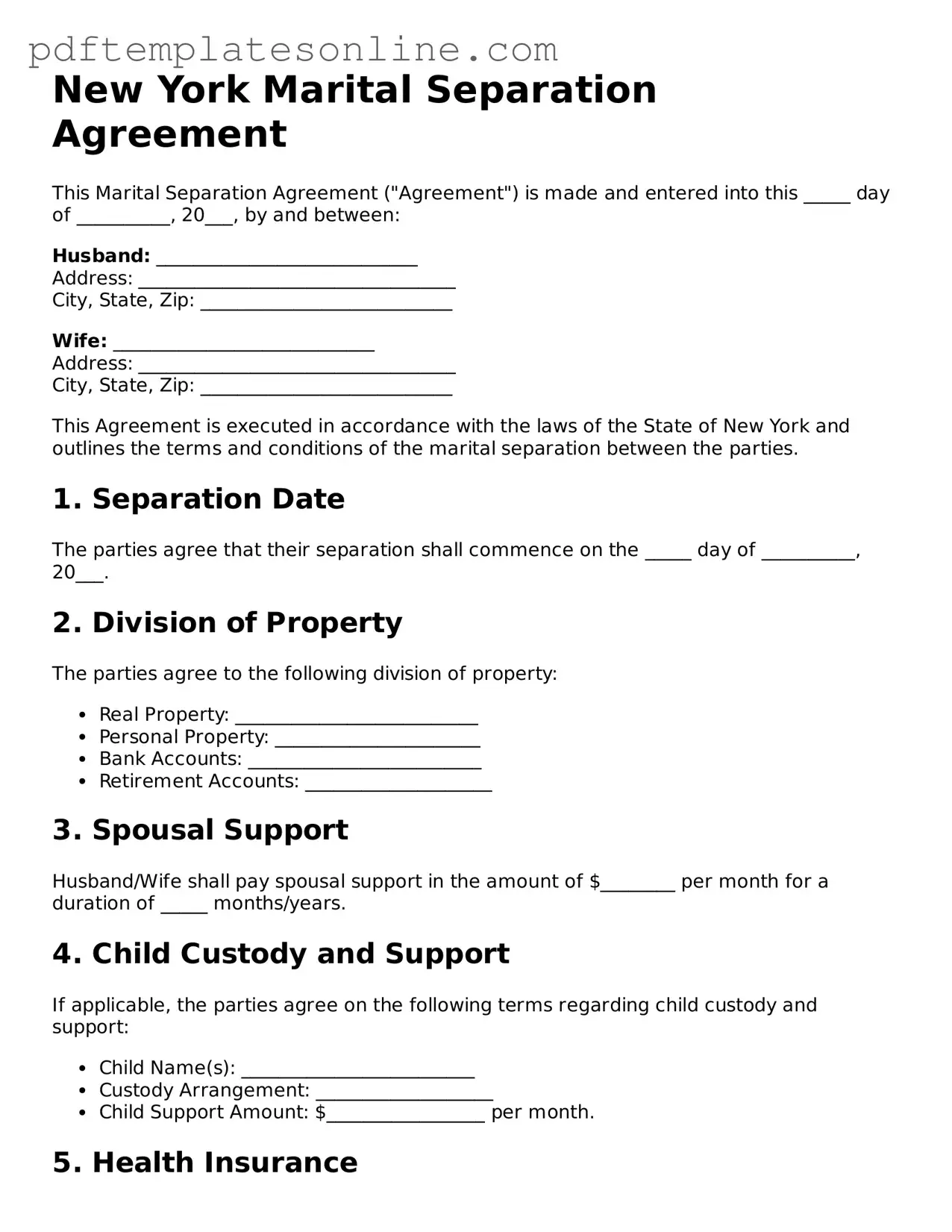Filling out a New York Marital Separation Agreement form can be a complex process, and many individuals make mistakes that can lead to complications down the line. One common error is not fully understanding the legal implications of the agreement. People often think that a marital separation is the same as divorce, but it is not. A separation agreement outlines the terms of living apart while still being legally married, which can affect future divorce proceedings.
Another frequent mistake is failing to include all relevant information. When completing the form, individuals sometimes overlook important details such as income, assets, and debts. Omitting this information can lead to misunderstandings and disputes later. It is crucial to provide a complete financial picture to ensure that both parties are aware of their responsibilities and entitlements.
Many people also underestimate the importance of clarity in the language used in the agreement. Vague terms can create confusion. For instance, using phrases like "reasonable" or "fair" without defining them can lead to different interpretations. Clear and specific language helps both parties understand their rights and obligations, reducing the potential for future conflicts.
Another common error is neglecting to address child custody and support issues adequately. Parents may assume that these matters will be handled later, but including them in the separation agreement is essential. This ensures that both parties are on the same page regarding the care and financial support of their children.
Some individuals mistakenly believe that they can complete the form without legal assistance. While it is possible to fill out the form independently, consulting with a legal professional can provide valuable insights. An attorney can help identify potential pitfalls and ensure that the agreement complies with New York laws.
People often forget to update the agreement if their circumstances change. Life events such as job changes, relocations, or changes in financial status can significantly impact the terms of the agreement. Failing to revise the document can lead to complications and disputes in the future.
Additionally, many individuals do not consider the tax implications of their separation agreement. Certain financial arrangements, such as alimony or property division, can have tax consequences. Being aware of these implications can help both parties make informed decisions.
Another mistake is not having the agreement notarized. While notarization may seem like a minor detail, it adds an extra layer of authenticity and can be crucial if the agreement is ever challenged in court. Without notarization, the enforceability of the agreement may come into question.
People sometimes rush through the process, leading to mistakes. Taking the time to carefully review each section of the form is vital. Rushing can result in overlooked details or inaccuracies that could complicate matters later on.
Lastly, individuals may fail to keep a copy of the signed agreement. After all the effort put into creating the document, it is essential to have a copy for personal records. This ensures that both parties can refer back to the agreement when needed, reducing the likelihood of disputes.
